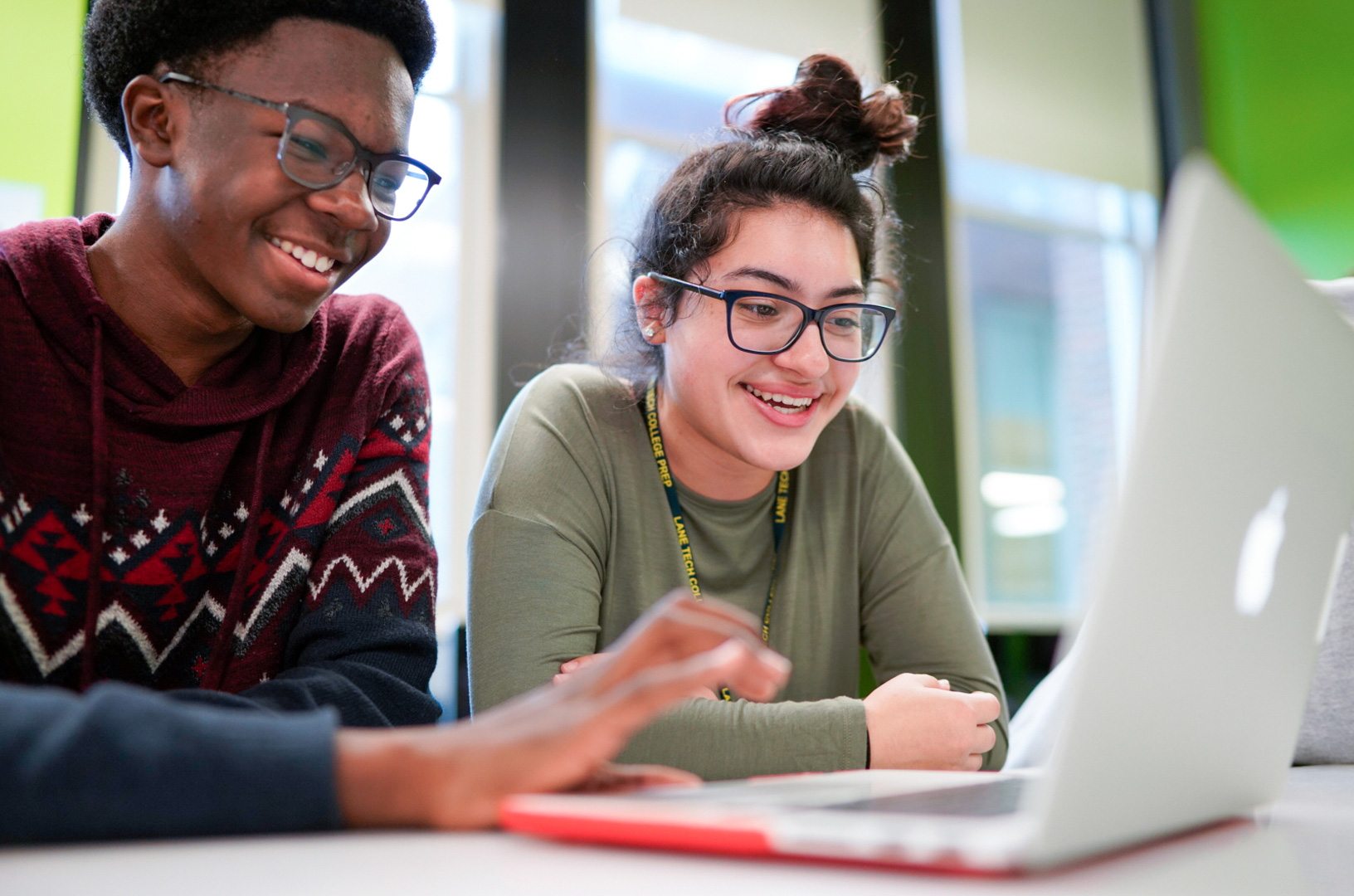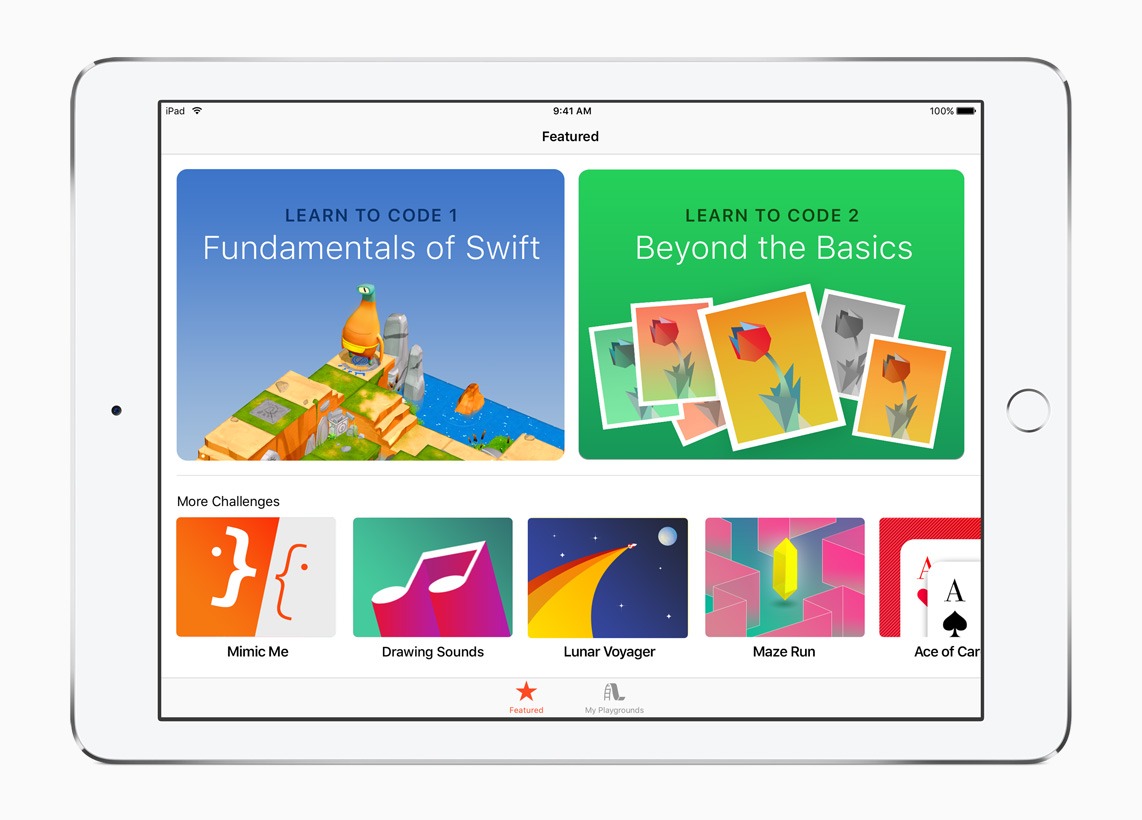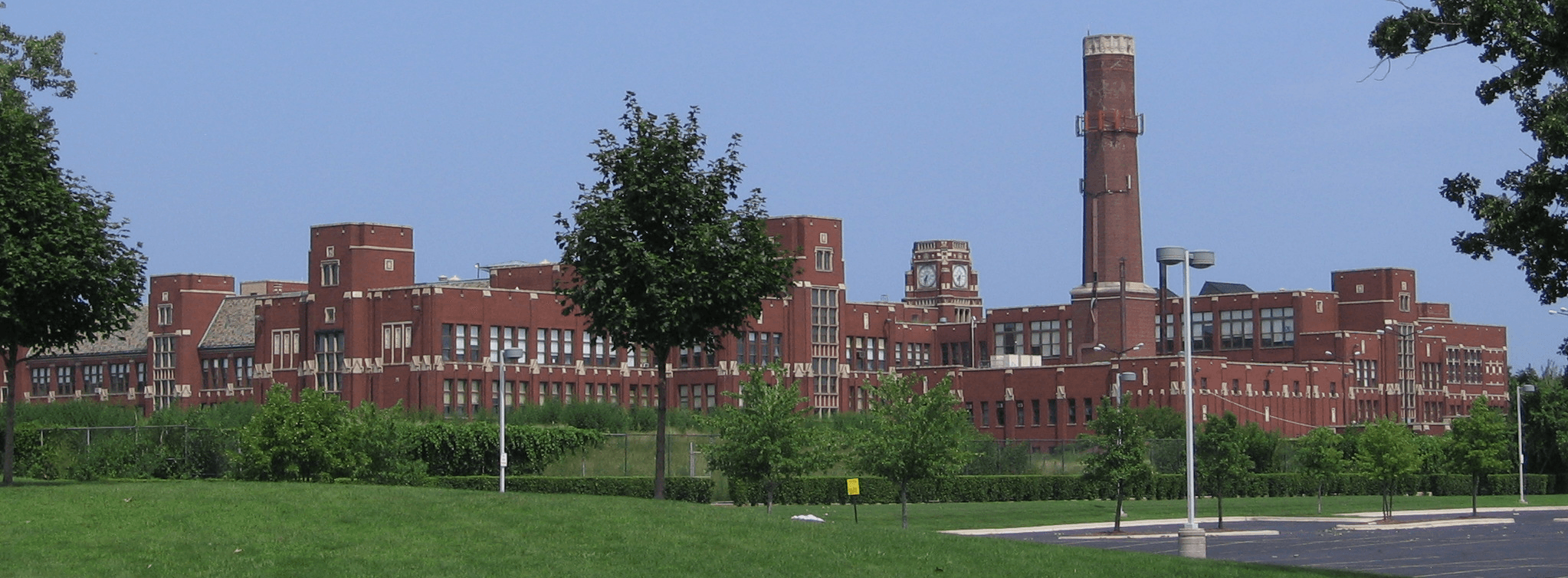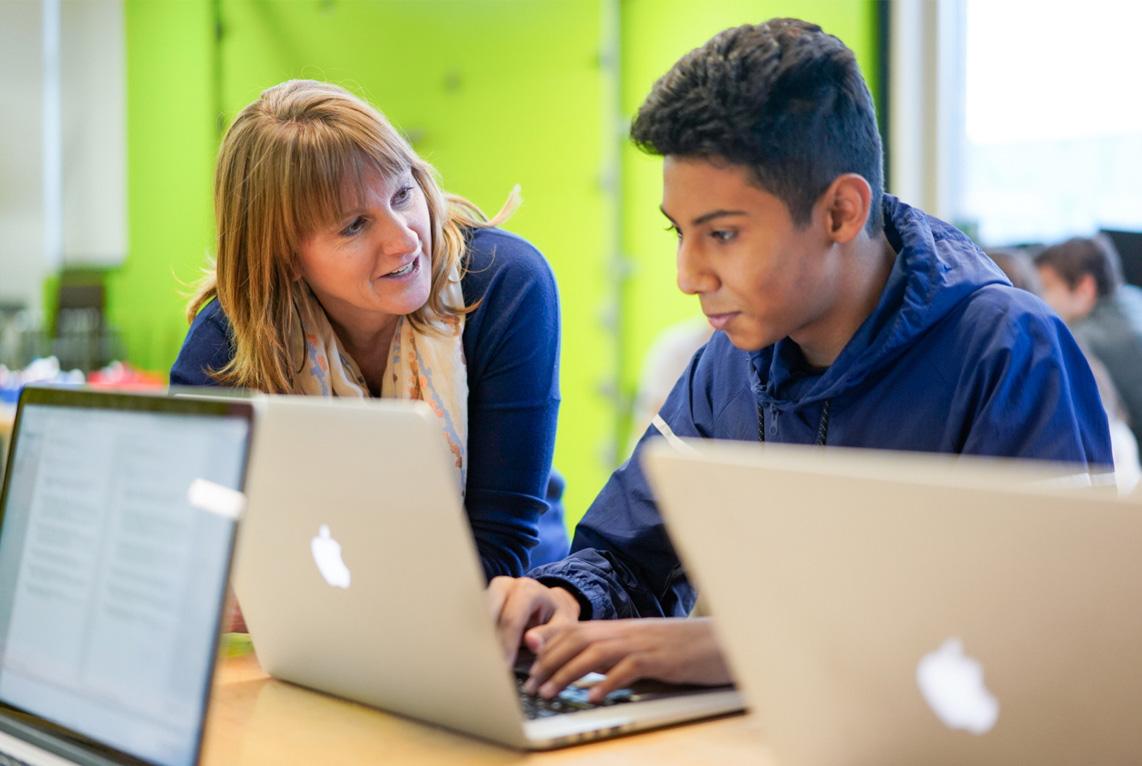Next Tuesday, Apple will take the stage at Lane Tech College Prep High School in Chicago to announce ‘creative new ideas for teachers and students.’ As any Apple event approaches, it’s natural to speculate about what products might be announced. After all, that’s what usually happens at an Apple event.
However, there’s a forest getting lost for the trees in all the talk about new hardware and apps. Sure, those will be part of the reveal, but Apple has already signaled that this event is different by telling the world it’s about education and holding it in Chicago. It’s part of a broader narrative that’s seen a shift in Apple’s education strategy that can be traced back to WWDC 2016. Consequently, to understand where Apple may be headed in the education market, it’s necessary to look to the past.
Apple’s Early iPad in Education Efforts Falter
Apple’s history of supporting education goes back to the company’s origins, but we don’t have to go back that far to understand where it stands now. The best place to start is at the Guggenheim Museum in New York City. The museum was the backdrop for Apple’s last event held outside the environs of its Cupertino headquarters, which just so happened to also be about education. The event, which was held in 2012, unveiled iBooks 2.0 featuring interactive textbooks, the iBooks Author tool for creating them, and iTunes U for iOS.
In 2012, iPad sales were still rising, and hopes seemed high that the iPad was the perfect device to support education. At first, that seemed to be the case. Apple was awarded a $30 million contract, which was the first part of a bigger deal to supply iPads to every student in Los Angeles’ school district in 2013. Later during Apple’s Q4 2013 earnings call Tim Cook said that the company had grabbed 94% of the tablet market in schools, which was followed by record-breaking iPad unit sales in Q1 2014.
It wasn’t long after that Q1 2014 earnings call, however, that several factors converged to undermine iPad adoption in schools as well as challenge the Mac’s position in the classroom. In fact, the very same earnings call foreshadowed trouble ahead. In the Q&A section of the call, Tim Cook cited the iPad’s market share in education, dismissing an analyst’s question about the threat posed by low-priced Chromebooks. However, by Q2 2014, global iPad sales began to drop and as the year progressed, Apple’s iPad deal with Los Angeles and other school systems began to unravel.
Meanwhile, Chromebooks were taking off. With their built-in keyboard, familiar Google suite of apps that many schools were already using, and lower price, Chromebooks quickly gained a foothold in schools. By the middle of 2017, The New York Times reported that:
Today, more than half the nation’s primary - and secondary-school students — more than 30 million children — use Google education apps like Gmail and Docs, the company said. And Chromebooks, Google-powered laptops that initially struggled to find a purpose, are now a powerhouse in America’s schools. Today they account for more than half the mobile devices shipped to schools.
Faced with a broad-based decline in iPad sales and blindsided by a serious challenger, Apple needed a new approach.
Everyone Can Code
We believe every student should have the opportunity to learn to code.
- Tim Cook, Apple Special Event, September 7, 2016
The seeds of a new strategy were planted at WWDC in 2016 with the announcement of Swift Playgrounds and later that year with the introduction of Apple’s Everyone Can Code initiative.
Swift was still a young language at the time. Swift Playgrounds got a lot of attention, but at Apple’s fall event in 2016, the company revealed a broader, more ambitious plan that included an interactive textbook that was available in iBooks and additional resources for teachers and students that supported a complete Learn to Code curriculum. Unveiled with the public release of Swift Playgrounds in the fall, Everyone Can Code was interpreted by many as a sign of commitment to Swift and attempt to accelerate its adoption. Those were certainly aspects of the program, but Everyone Can Code was the first piece of a larger puzzle that has begun to reveal itself over the last 18 months.
The announcements surrounding Everyone Can Code have dramatically accelerated since 2016. Apple finished that year by opening its first-ever iOS Development Academy in Naples, Italy. A similar center was opened in Bengaluru, India at the beginning of 2017.
Apple took another big step in May 2017 with the introduction of a more advanced curriculum that extended the existing Everyone Can Code program with a focus on high school and community college students. As it did the year before, Apple released two eBooks: App Development with Swift for students and a teacher guide. At the same time, the company announced that six US community colleges serving almost 500,000 students would kick off the program. In the fall and beginning of 2018, the curriculum was extended internationally, first with an announcement that 20 worldwide colleges and universities were adopting the program, followed by an additional 70 institutions in Europe.
Late last year another program was announced that didn’t find its way into an Apple press release. Ohio State University became an Apple Digital Flagship University, a new comprehensive partnership with Apple like none other in higher education. The initiative has three components:
- iPads – equipped with Apple Pencil and Smart Keyboard apps – delivered to all incoming students free of charge during summer orientation starting next year.
- An iOS Design Lab, set to open in a temporary space in 2018 and in its permanent home at Ohio State’s Columbus main campus in 2019. The lab will offer opportunities for direct engagement with technology among students and faculty members.
- Coding courses, set to launch in spring 2018, featuring Apple’s Swift programming language. The courses are an extension of Apple’s similar arrangement with more than 30 community colleges nationwide.
The lab will also be available to the larger community surrounding the university.
Aside from the increasing frequency of the announcements in 2017 and 2018, there are a couple of additional notable aspects of Apple’s new approach to education.
First, Everyone Can Code is about more than hardware and the Swift Playgrounds app. Both are important, but they are tied together by a curriculum that creates a roadmap for schools and teachers to follow and, in the case of the Digital Flagship University program, a lab that encourages broader community involvement too.
Second, as Apple rolled out Everyone Can Code to high schools and colleges, its messaging gained a new dimension. The press releases not only extolled the virtues of learning, but they began tying it with local economic benefits too. An example is this statement from the announcement of the high school and college-level curriculum:
Earlier this month, Apple announced the creation of the Advanced Manufacturing Fund focused on creating jobs in the US throughout our supply chain, with an initial investment of $1 billion. The new Swift coding curriculum is another example of Apple’s commitment to economic development and will help create even more career opportunities for students across the country. Apple now supports 2 million jobs across all 50 states, including more than 1.5 million jobs attributable to Apple’s app economy.
Similar statements about Apple’s economic impact are found in its announcements of programs in Europe and other parts of the world.
What’s changed about Apple’s approach to the education sector is that it’s no longer simply selling schools on hardware and apps and leaving them to figure out how to incorporate them into the classroom. Hardware and software are critical aspects of the strategy, but were not enough to defend the company’s early lead in tablets against Chromebooks. What Apple is doing with Everyone Can Code, which I think is best demonstrated by the deal with Ohio State, is offering value beyond the hardware and software. The strategy is to provide a focused, turn-key solution to education that alters the calculus when schools evaluate their options. Apple is also reaching out more broadly into schools’ communities, forming a public/private partnership to support education at all levels, which is something I think we’ll hear more about in Chicago next week.
Let’s Take a Field Trip
Two other events occurred as 2017 came to a close that have a bearing on next week’s education event.
In October, Apple opened a new flagship store on Chicago’s Michigan Avenue. The store, which was among the first to roll out Apple’s reimagined retail experience, emphasized the company’s Today at Apple program featuring presentations and educational programs with artists, musicians, and other creators in the surrounding community.
In isolation, the opening of the new Chicago Apple Store seems unrelated to next week’s event, and maybe it is. However, Tim Cook visited Chicago for the grand opening of the store and took the opportunity to meet with Chicago Mayor Rahm Emanuel and be interviewed on the Mayor’s podcast, Chicago Stories.1 When Emanuel asked what Apple could do to help kids learn to code who don’t have access to Apple products, he pointed to Apple’s in-store programs and its partnership with local organizations like Chicago’s tech incubator, 1871.
Just two months later, Apple announced an expansion of its Everyone Can Code program to all of Chicago’s nearly 500,000 students. The program includes K-12 public school students and City Colleges of Chicago and involves local businesses and non-profits. That’s an education deal of extraordinary size not seen since Apple was chosen to supply iPads to Los Angeles schools. In fact, according to a 2017 story in The New York Times, Chicago is the third biggest public school district in the continental US behind New York and Los Angeles.
It’s against that backdrop that Apple will take the stage at Lane Tech next Tuesday. It’s an opportunity to hit the reset button, proving that Apple can implement Everyone Can Code on a scale comparable to the failed deal with Los Angeles five years ago. It’s also a chance for Apple to celebrate its partnership with other schools big and small that it’s already working with successfully and use them and Chicago as a roadmap for what it has in mind next for education.
Noticeably absent from the December press release about bringing Everyone Can Code to Chicago students is any mention of hardware. The Chicago Public Schools district already uses Macs and iPads, but it’s heavily invested in Chromebooks too; so much so that it has held a teacher conference called Googlepalooza, which leads me to doubt whether the school system has enough iPads to administer the Everyone Can Code program to all its students. Given the scale of the program, it’s too much to expect that every student would be provided an iPad like incoming freshmen are at Ohio State, but I won’t be surprised if a hardware component of the program is announced Tuesday.
Although Everyone Can Code appears designed to shift the dialogue with schools away from price, where Chromebooks have an advantage, it can’t be avoided entirely when so many school systems are under tight budgetary constraints. Consequently, I expect Apple will drop the price of the base model 9.7” iPad another $30-50.
However, a price drop also introduces constraints. As a result, I don’t expect hardware changes like Apple Pencil support in the base model iPad. Instead, a rugged Apple-manufactured keyboard case that connects via Bluetooth seems more likely for the low end of the iPad line. Last year, Apple teamed up with Logitech to offer the Logitech Rugged Combo case. Like the LG 5K display that replaced Apple’s Cinema Displays, that feels like a placeholder deal meant to satisfy schools until Apple comes up with its own solution.
If we see a new iPad, it’s more likely to be at a higher price point than the base model, but close enough to the existing base model’s price that it could legitimately be considered by some schools. That would give the device a reason to share the stage with a lower-cost iPad and an opportunity for Apple to introduce new features like adding the Smart Connector and Apple Pencil support to more models of the iPad. With a Smart Connector, Apple could add a keyboard case that wouldn’t need to be separately charged, a feature that should tempt school IT administrators.
Macs will likely play a secondary role at next week’s event. A price drop and a spec bump for the low-end Mac make sense, but a Retina display as some rumors suggest doesn’t. Apple may also announce a 13” Retina MacBook, but I doubt that will occur at the low end of the line where the Air competes directly with the Chromebook.
Apps should be a major focus of the event too. It’s an opportunity to cover the highlights of iOS 11.3, but I expect the most time will be paid to apps that support Apple’s education strategy. In an early beta of 11.3, there were signs of a new framework called ClassKit. Although I don’t expect Apple to turn next Tuesday into a mini-WWDC session by explaining the ins and outs of the new framework, the company is likely to introduce new features to its Classroom app that take advantage of the framework and perhaps demonstrate features that third-party developers can use to enhance their own apps.
iBooks also feels like a natural candidate for a refresh next week. The app, which was featured prominently in Apple’s last education event outside California, has not seen a major update in some time. During part of the iOS 11.3 beta, the app was renamed ‘Books,’ which suggests that at a minimum, a rebranding of the app is in the works. I’m with Ryan who recently wrote about his expectations for a revamped iBooks in MacStories Weekly though. As Mark Gurman’s report in January for Bloomberg suggests, the time feels right for more than a simple rebranding, though what exactly will change is unclear.
The 2012 education event in New York City also introduced iTunes U for iOS. Last year, Apple pulled iTunes U content from iTunes and added it to Podcasts leaving the app with no real connection to its namesake. Also, the content available through the app extends beyond the university level suggested by the name. As a result, I expect a rebranding and redesign of the app as well as a re-imagination of how it and iBooks/Books fit together to provide a cohesive learning experience for students.
As soon as any Apple event is announced, people pin all of their hopes and dreams for new products to it. Suddenly, it becomes the event where every crazy rumor from the past six months becomes a ‘sure thing.’
Apple has a brand-new venue for major events right in the backyard of its new Apple Park campus, which has only been used once for a major event. The fact that next week’s event is being held outside of Cupertino signals that this is not an event of the scale of a September iPhone introduction. It also signals that it’s not an event that’s just about Apple and its products.
Apple has a long history of supporting education. It’s struggled over the past five years in the face of competition and missteps, but it hasn’t abandoned teachers and students. Next week’s event is as much about renewing the company’s commitment to them as it is about the products that will be discussed.
The event is also about making a connection with communities. At a time when Silicon Valley is looking more isolated and out of touch with the lives of people outside the Valley, Apple is reaching out, looking for a home for a new campus, and finding ways to bring public/private partnerships to education. In his interview with Rahm Emanuel, Tim Cook said:
You need the … political leadership, … you need great universities, schools that get people excited about entrepreneurship, you need some venture capital to give these guys some money so that they can go off and create things. You need a number of things. Chicago has all of it.
That’s a message I expect we’ll hear again on Tuesday, and it explains why Apple has chosen Lane Tech as the venue for next week’s presentation.
Change in education moves slowly. Next week when Apple takes the stage at Lane Tech, we will get updates to apps and some hardware announcements, but more importantly, the event will serve as a milestone in Apple’s education strategy that’s been evolving over the past five years. It’s not an endpoint any more than it’s the first step, and whether it’s successful or not remains to be seen. However, even if next Tuesday doesn’t create the same product splash as an iPhone event, I expect what we will see is an Apple with renewed confidence in its role in education and a roadmap for where it expects to take its education initiatives in the future.







